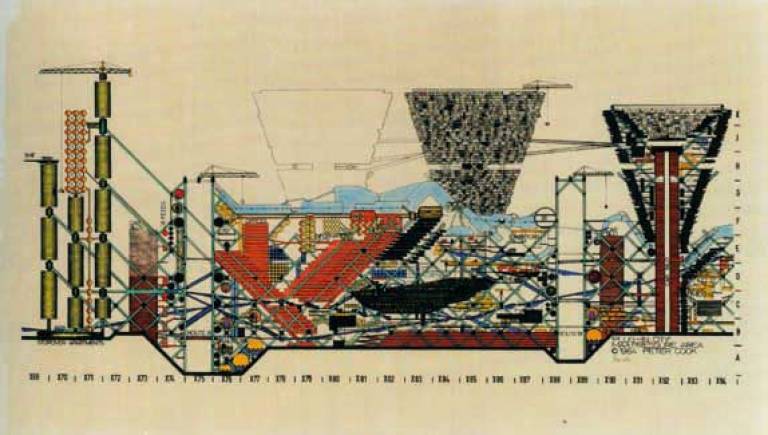Visionary Architecture
11 October 2006
A new architectural theory book that promises to cover "the naughty bits that aren't normally talked about" has been written by Professor Neil Spiller from the UCL Bartlett School of Architecture.
 'Visionary Architecture', which will be published by Thames and Hudson in November, concentrates on the work of twentieth and twenty-first century architects who work at the extremes of technology and often outside of traditional practice set-ups.
'Visionary Architecture', which will be published by Thames and Hudson in November, concentrates on the work of twentieth and twenty-first century architects who work at the extremes of technology and often outside of traditional practice set-ups.
The book is an antidote to what Spiller calls the "hi-tech Lords", a reference to Norman Foster and Richard Rogers, both of whom don't feature in the book: "Many visionary architects have become disappointed with the limitations of traditional practice, its cheese-paring economic straitjacket and the political machinations of clients. Visionary architecture if often unbuilt and sometimes might even be unbuildable and can take many forms."
Many of the visionaries discussed in the book studied or taught at the Bartlett and include former Bartlett Chair and founding member of the highly influential Archigram group, Professor Peter Cook. A whole chapter of the book is dedicated to Archigram whose work in the 1960s such as the 'Plug-in city' and the 'Walking City' embraced technology, communications and popular culture in a conscious attempt to overcome the limitations of the all-pervading prescriptive modernism which was both practised and preached by the architectural establishment of the day.
The chapter about Archigram - 'The second poverty of heroic structures and Arcadian networks' - finishes with a section devoted to Bartlett academic and practicing architect, CJ Lim. Spiller traces the links, as he does at the end of each chapter in the book, between the visionaries of the past and the visionaries of the present whose work forms a directly evolving link. Lim was taught by Cook and the influence shows in his award-winning work. "The trajectory of Lim's work has flirted with the heroic structure, the moveable/pod device, the architectural use of the trailer, the English Victorian view of engineering, and the graphics and iconography of the Digital Age," explains Spiller.
The Digital Age, and in particular the emergence of cyberspace, inform the later chapters of the book and introduce Spiller's own work. Spiller, himself a visionary architect, is currently exploring 'the harvesting of cybernetic, genetic and cyberspatial space-time vectors and their transmission, transmutation and growth to dissolve the old dichotomy of building and landscape.' Previous projects have included hypothesising on the outcomes of strapping an antenna to the head of a bee, so that its trajectory might be translated into built space, all are informed by the use of advanced technologies with an eye to the surreal.
Despite many of the projects which appear in the book having never being built, the technologies they dare to imagine often predate actual breakthroughs like the internet or virtual reality by years. However, even if they remain no more than paper ideas, Spiller is certain of their worthwhile contribution to research and debate: "Visionaries teach us to be optimistic and ambitious and not to accept the mundane shams that often are presented as acts of architecture to the world."
To find out more about Neil Spiller's work, use the link at the top of this article.
Images:
Plug-in City, Maximum Pressure Area Section, Cook/Archigram
Vitriolic Column, Neil Spiller
- Link:
- Neil Spiller
 Close
Close

